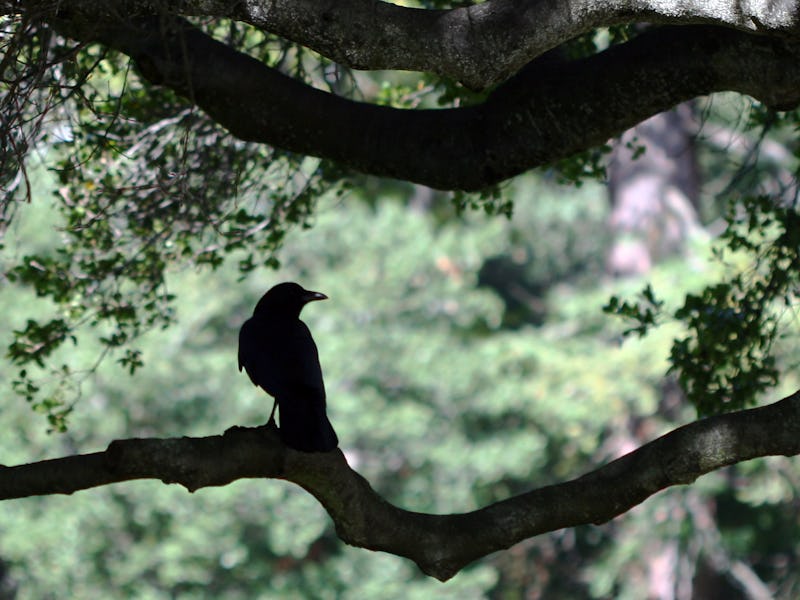'Speciation Reversal' Merged Raven Species Into a Globe-Spanning Force
Humans did the same long ago.

There are two words for a group of ravens: an “unkindness” or a “conspiracy.” It’s fitting that there are multiple words to describe them collectively, as they are quite a tight-knit bunch. For many years, biologists have maintained that there are only two species of raven in the entire world. Now, a new article in Nature Communications reveals that the eerie birds have grown even closer, merging into a single species.
In the paper, researchers from the University of Maryland, Baltimore County present the strange results of a genetic analysis on ravens around the world, which revealed an unexpectedly high amount of intermingling between the two known species — so much that they could no longer be distinguished from one another.
This represents, in a way, a return to the past: One to two million years ago, these birds existed as a single unit — the Common Raven. Somewhere along the line, they split off into two distinct species. Now, tired of being apart, they are undergoing a genetic reunion.
There used to be two species of raven; now they are merging back into one.
The two species are the “California” ravens, which live in the American southwest, and the “Holarctic” ravens, which comprise all the ravens everywhere else in the world. In 2000, Kevin Omland, Ph.D., a professor of biological sciences at University of Maryland, Baltimore County and co-author on the new study, was the first to discover the two species, and since then his laboratory has determined that the California ravens had split away from the rest of the raven family, likely through mating with female ravens that were genetically distinct. The evidence is in the mitochondria of the California ravens, which look unlike that of any other bird in the family.
But now the Californians have re-entered the fold. In fact, the analysis revealed that they’ve been trying to do so for tens of thousands of years, hybridizing slowly but steadily with their ancient kin. The genomic data that the team based its work on was collected from samples of hundreds of ravens from all over the U.S., pieced together using advanced genomics techniques that can reveal an individual’s history through its DNA.
Holarctic ravens are those that live everywhere outside the American southwest, though the distinction between the two species is no longer clear.
This process of divergence and re-convergence that the Common Ravens went through is called “species reversal,” and despite the often-used metaphor of an “evolutionary” tree, species do not always divide into increasingly distinct branches. Sometimes, those branches curve back in on themselves over evolutionary time — just take a look at human history.
Whereas ravens had only two species, at one time there were as many as six Homo species, only one of which survives today — Homo sapiens. But like the present-day ravens that carry genes from both the Holarctic and California species, humans today carry traces of our Homo cousins, like the Neanderthals and Denisovans.
Quoth the ravens; nevermore? No one can predict whether they will diverge again.
It’s too early to say whether the newly discovered genetic secrets of the ravens will help American conservationists deal with the “raven epidemic” that is sweeping the southwest. The raven population in the region is estimated to have grown by 700 percent over the last 40 years, forcing conservationists to arm themselves with lasers to frighten the birds away from damaging the local wildlife, like the helpless tortoises. But these are smart birds, and very closely knit at that; it will not be surprising if the increasingly united team is keenly aware there’s strength in numbers.